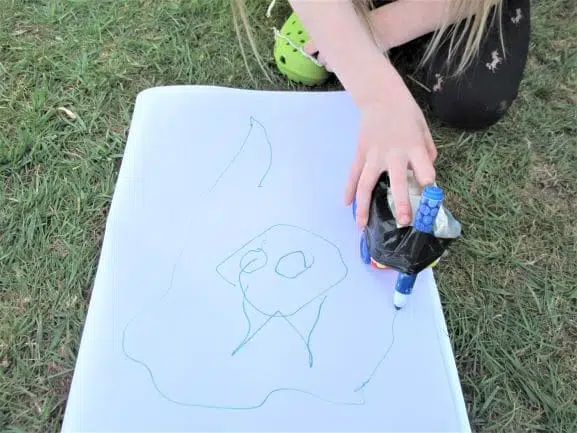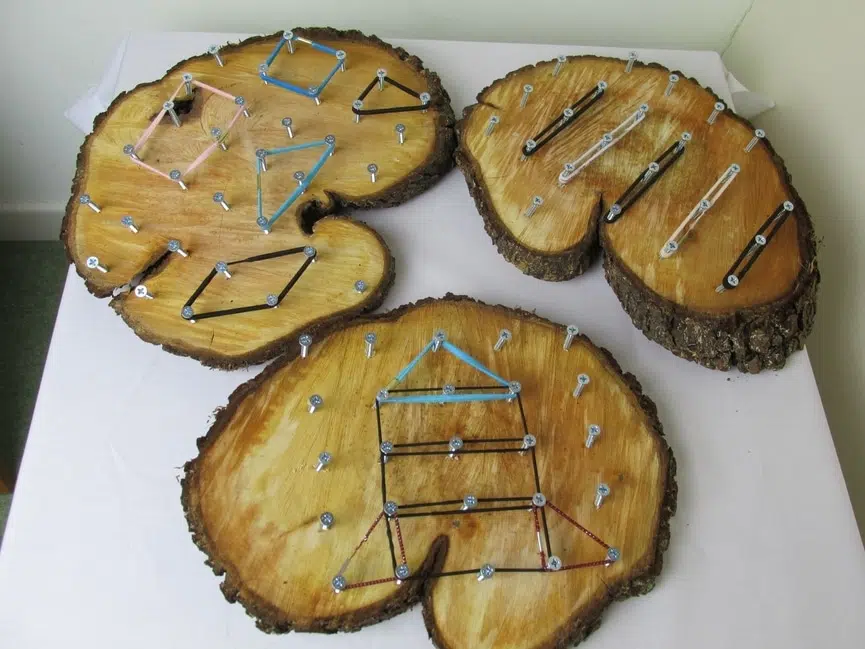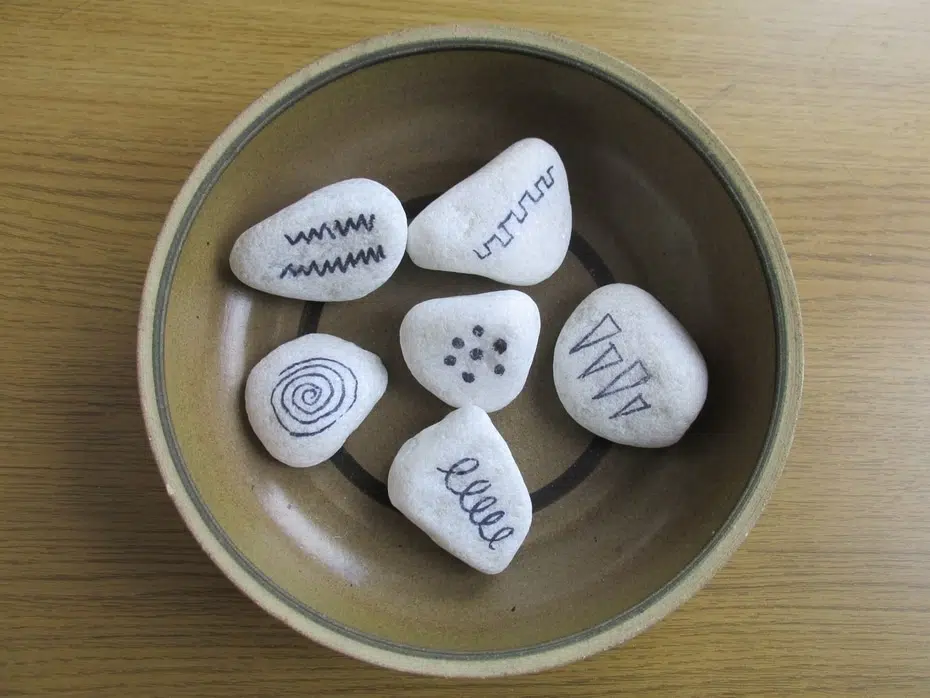Pretty much everyone who works in early childhood education, and also many parents, are aware of the main difference between fine and gross motor skills; but did you realize there are many more differences between the two than meet the eye?
Understanding these differences will help you appreciate many things, including the ways boys and girls develop, the types of learning opportunities you can have that develop both, and also the way you can cater for fine and gross motor skills in your indoor and outdoor environments.
I will start with the basics and expand from there.
So, to start with, what is the main difference between fine and gross motor skills?
Fine motor skills are small movements, usually in the hands and fingers. Gross motor skills involve larger movements, involving parts of the body such as legs, arms, the torso and feet.
That’s the simple version, but there are many fundamental differences between the two. I have listed what I believe to be the top 12 of these, with a few top tips on how this knowledge will help you thrown in as well.

1. Boys V Girls
There is a fascinating discrepancy between the rates at which boys and girls typically develop in the two areas.
In general, boys often tend to develop gross motor skills at a quicker rate than girls. (Source) However, girls will usually develop fine motor skills before boys of the same age.
The progression that we all go through is starting with gross motor, and progressing into developing fine motor skills (though, of course, we all will be using gross motor for the rest of our lives). It suggests then that boys spend much longer transitioning from gross motor to effective fine motor.
Whilst gross motor skills are clearly important, the big stumbling block in early education has traditionally been in fine motor skills. Because of the large emphasis placed on early writing, girls have always had an advantage.
This time lag is something to understand and appreciate. Nature has dictated that many boys will need a much longer time to develop their fine motor skills. There are huge benefits in allowing all children the right amount of time and support to develop fine motor skills at their own pace.
Top tip – some boys need longer to develop their fine motor skills, and it is more of a spectrum – they will need a lot of exposure to really simple fine motor work until they are ready to try out more difficult activities.
2. Parts Of Body Used
There are some clear differences between the body parts used for either gross or fine motor skills, but there are some less obvious ones as well.
Whilst we all understand that fine motor activities often use the fingers, did you know that some of the following areas are also used…
Fine Motor
Did you realize that using the small muscles of our lips is a fine motor skill? When we pucker our mouths or make facial expressions, these are fine motor movements we are making.
Tongue – Small movements for eating and speaking are also a fine motor movement.
Toes – We can pick things up with them also.
Gross Motor
Gross motor skills use different body parts including:
Legs – For running, jumping, hopping, swimming, etc.
Arms – For balancing, running, throwing, pushing, pulling
Core – Used for the vast majority of movements – swimming, walking, running, throwing, pushing, etc.
Feet – Used for jumping, hopping, kicking, walking, running, skipping (and more)

3. Objects V No Objects
Whereas fine motor is predominantly involved with movements centered around objects, this is not the case with gross motor.
Gross motor skills are divided into two categories – locomotor and object control skills. Without getting too technical, locomotor movements require no objects, and object control skills quite clearly do.
Examples Of Locomotor Gross Motor Skills
The majority of common gross motor skills are locomotor. These include:
• Running
• Skipping
• Walking
• Jumping
• Hopping
• Crawling
• Swimming
These are just a few of the many examples you could think of.
However, there are probably less object control skills:
Gross Motor Object Control Skills
These include:
• Building
• Climbing
• Throwing
• Catching (such as in these 30 fantastic ball games)
• Pulling
• Pushing
Fine Motor Skills
On the other hand, the vast majority of fine motor skills are linked to objects and are not locomotor. This is the opposite of gross motor.
Some examples of fine motor skills that require objects include the old favorites such as:
• Threading
• Weaving
• Mark-Making
• Cutting
• Picking up small objects
• Posting
4. Amount Of Space
Fine motor and gross motor activities will look very unlike each other, and they will require different physical environments to take place successfully.
Probably the biggest issue is space. For gross motor, think big, and for fine motor, it could be any size (small to large).
Gross motor skills involve:
• Lots of rapid movement
• Exploring big resources
• Exploring and moving over a wide area
• Exploring the ways in which our bodies move in different ways
On the other hand, fine motor is more about:
• Small-scale movements
• Exploring small resources
• Moving in a confined or small area
The perfect space for gross motor would be large, and it would also be safe. It could also have equipment in it that supports gross motor, such as climbing equipment.
Fine motor, by contrast, could be done pretty much anywhere, but it is probably good if it takes place in a smaller more isolated area. Anywhere that offers not that many distractions and the opportunity to focus is good.
As one concrete example, fine motor play with geoboards is best done in a quieter space with fewer distractions.

5. Small V Big Mark-Making
I thought this deserved a category of its own, as it is so central to both gross and fine motor – mark-making.
Different types of mark-making opportunities will support and develop either fine motor skills or gross motor.
For gross motor, you want to think about big movements of the arms, shoulder and core. For fine motor, smaller-scale mark-making will be working the fingers, hands and wrist.
Some great gross motor mark-making opportunities include
• Skywriting in the air with ribbons or streamers
• Painting fences with water from buckets
• Large mark-making on sheds, tables, and chalkboards
• Big mark-making on the ground
Excellent fine motor mark-making includes:
• Making cards
• Drawing pictures on paper
• Writing words, captions and sentences
• Mark-making on envelopes and letters
• Writing in diaries and notebooks

6. Size Of Resources
Different-sized resources will really help in catering for both fine and gross motor development. Often you can have a mixture of the two sizes of resource in one learning area.
For example:
Large V Small Construction
Large construction for gross motor includes:
Planks, crates, gutters, tubes, pallets
(For lots of examples of this kind of big-scale outdoor construction check this article out).
Smaller construction, which is ideal for fine motor includes:
Lego, Duplo, building blocks, connecting links, 3D shapes, mega blocks
Small V Large Sand
You can use many large pieces of equipment for sand play, including:
Gutters, ramps, buckets, spades
These can be combined with a range of smaller items to develop fine motor skills:
Shells, pebbles, small sieves, pourers, small scoops
Small V Large Water
The same applies to water play. Gross motor:
Buckets, gutters, pipes, pouring jugs
Fine motor:
Fishing rods, small scoops and pourers, small cones and measuring cylinders
Other Examples
There are many other sets of opposites in similar learning areas. For example:
Small-scale malleable play with playdough, small tools and loose parts, and large-scale messy play.
Ball games, and small dice or board games.
7. Risks Of Each
Most activities that children do will come with some level of risk, and it is always a good idea to know what these issues are before you try anything out.
The main risks of fine and gross motor are actually very different.
So what are the main risks of fine motor activities?
This is undoubtedly choking. Because you are using small items of one sort or another, there is always the risk that children may put them in their mouths.
To try to minimize this risk, here are a few pointers:
- Risk assess the level of supervision that will be required for an activity
- Risk assess if you have any children that are more likely to eat or swallow things, for example, children with autism
- Use age-appropriate equipment – for example, use pompoms designed for children the right age.
For more about the risks involved in loose parts play, take a look at this article.
Now on to the risks of gross motor skills. The risks are completely different, with probably the main ones being:
- A child falling off something they are climbing up
- They fall over when running, jumping, etc.
- Tripping over
- Being hit by something during a game, e.g. a ball, a building block that falls, etc.
- They hurt themselves trying to lift or push or pull
Again, risk assessment is key. Offer the level of supervision that is necessary.
8. Indoor V Outdoor
The environment in which gross and fine motor skills take place will often be different.
As a generalization, gross motor skills are ideal for outdoor learning. This is because they require lots of space and the ability to use big equipment. This would often not be safe to use indoors.
Fine motor skills are more versatile. They could happen both outdoors or indoors quite easily, but they are probably in general better suited for indoor learning.
This is because the equipment will be smaller, and also because it is good if they happen in a part of the space that is free from distractions, and where children can attempt to reach a state of ‘flow’. This is basically the same as the sports concept of ‘getting in the zone.’
Of course, fine motor can exist outside, and gross motor indoors.
Gross motor skills are used almost entirely throughout our lives. They are an ever-present – children are walking, bending, moving most of the time. However, to find their fullest expression, doing them outside really helps.

9. Develop At Different Rates
It seems very clear that children’s gross and fine motor levels of skills progress at different rates.
In simple terms, they can often get to a level of proficiency quite quickly with gross motor, in that they are able to run, walk and do the major movements at quite a young age.
Although they begin to learn fine motor from a very early age, they normally reach a good level of skill in this area much later, often at 6 or 7 years of age.
Some people think that children develop gross motor skills first and then move on to fine motor. However, this is not really how it works.
Both are developing at the same time. Certainly from 3 months, children will be developing both fine and gross motor skills.
Certainly, the two do have an impact on each other, but fine motor skills generally will lag behind gross motor ones, often by several years.
10. Size Of Movements
This one is obvious, but it has lots of issues.
Of course gross motor is all about large movements, and fine motor is all about small movements.
Some ways to support large movements are:
- Provide an outdoor learning environment that has enough space to move around
- Have lots of big equipment
- Provide opportunities for digging and sweeping
- Model ball games
- Have equipment like ropes, hoops, spots
Fine motor requires smaller movements which are supported by:
- Encouraging children to dress independently, zip coats, put on shoes, etc.
- Encourage independent eating
- Tap into interests to provide stimulating fine motor activities
- Have a range of small equipment in most learning areas
11. Speech Issues V Gross Motor
This is another major difference between the sexes.
It is a surprising fact that almost 70 percent of children who have speech and language issues are boys. For example, in the UK 1.5 million children have speech and language issues, and 1 million of them are boys. (Source)
Fine motor skills are hugely important in speech, as tiny movements of the tongue and lips produce speech sounds.
On the other hand, there is some evidence that there is a slightly higher proportion of girls that suffer from delayed gross motor skills (though often this has less implications for immediate quality of life).
12. Types Of Play That Support Them
The types of play that support fine and gross motor often look different.
Gross Motor is particularly developed by:
- Opportunities to run, jump, climb
- Balls, hoops, ropes, skittles
- Bikes, scooters, large toy cars
- Construction materials, tires, crates, wooden blocks
Fine motor is developed by:
- Weaving and threading
- Using tools to manipulate materials like dough (take a look at these 15 fantastic playdough maths ideas)
- Using a range of small objects
- Using chopsticks, tweezers or tongs
Often the best learning experiences will contain both fine and gross motor skills, but this can sometimes take a bit of adult intervention to support.
Often adding fine motor to gross motor activities takes a bit of imagination, or the other way round.
Some things to think about include:
If children are engaging in large-scale construction outside, can they draw diagrams of what they have done?
Are areas like sand and water providing both large equipment and small?
Conclusion
Gross motor and fine motor skills are strongly connected, but they are also two quite distinct things. They need different planning, resources, space and mindset.
READ MORE
